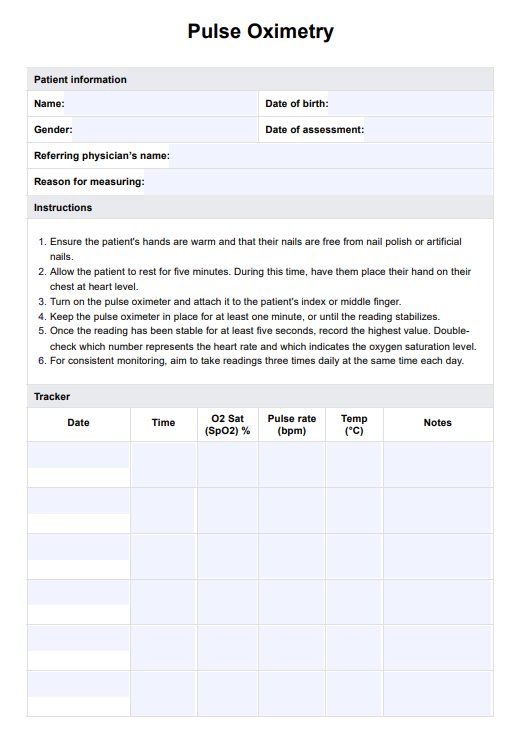It will take at least a minute or longer to get stable results.

Pulse Oximetry
Learn more about pulse oximetry, its uses, result interpretations, and more with our comprehensive guide. Click here also to get a free tracker copy!
Use Template
Pulse Oximetry Template
Commonly asked questions
The patient mustn’t have any nail polish or false nails. In addition, they must warm their hands to increase the accuracy of results.
Among the multiple conditions that may gi
EHR and practice management software
Get started for free
*No credit card required
Free
$0/usd
Unlimited clients
Telehealth
1GB of storage
Client portal text
Automated billing and online payments











